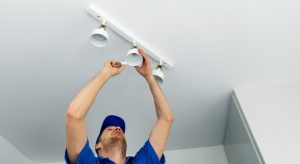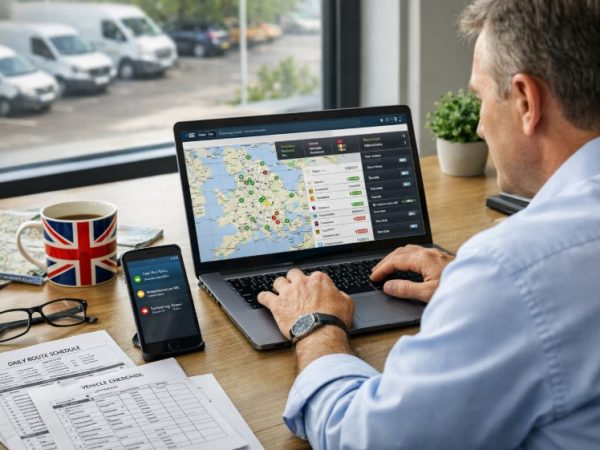
Achieving Energy Efficiency with Sustainable Lighting Solutions: A Comprehensive Guide
In today’s rapidly changing world, energy efficiency is no longer just a buzzword – it’s a necessity for evryone. As the global community becomes increasingly aware of the environmental challenges we face, the push for sustainable solutions is stronger than ever.
One of the key areas where significant improvements can be made is in sustainable lighting. Sustainable lighting is not only crucial for reducing energy consumption but also plays a vital role in lowering carbon footprints, conserving resources, and contributing to a healthier planet. Businesses and homeowners looking to optimize their energy usage and reduce costs can explore platforms like Utility Bidder, which helps compare and secure the best energy deals for a more sustainable future.
How To Achieve Energy Efficiency with Sustainable Lighting Solutions?
Exploring Eco-Friendly Illumination
Sustainable lighting refers to the use of energy-efficient lighting solutions that minimise environmental impact while providing optimal illumination.

These solutions often involve the use of technologies such as LED (Light Emitting Diode) bulbs, smart lighting systems, and solar-powered lighting.
Unlike traditional incandescent bulbs which convert only about 10% of the energy they use into light, with the rest being wasted as heat, LED bulbs are highly efficient, converting up to 90% of energy into light.
This not only reduces the energy consumption but also leads to substantial cost savings over time.
Smart lighting systems are another important aspect of this lighting solution. These systems can be programmed to adjust brightness based on the time of day, the presence of people in a room, or even the level of natural light available.
By ensuring that lighting is only used when and where it’s needed, smart systems significantly reduce energy waste.
The Benefits
The adoption of a ‘green’ lighting solution offers numerous benefits, both for individuals and businesses. Firstly, it leads to a considerable reduction in energy bills.
Although the initial cost of installing LED lights or smart lighting systems may be higher compared to traditional options, the long-term savings in energy costs make them a more economical choice.
Furthermore, the durability of these technologies means less frequent replacements, leading to additional savings on maintenance and replacement costs.
From an environmental perspective, energy-efficient lighting solutions play a critical role in reducing greenhouse gas emissions.
According to studies, widespread adoption of LED lighting could cut global carbon dioxide emissions by over 1.5 billion tons annually. This makes it one of the most effective measures for combatting climate change.
In addition to financial and environmental benefits, using this type of lighting can also enhance our quality of life. Improved lighting quality can lead to better mood, increased productivity, and even better sleep patterns.
This is particularly important in workplaces, where good lighting is essential for employee well-being and performance.
Implementing Solutions
Transitioning to green lighting solutions doesn’t have to be a daunting task. It can be achieved through a series of manageable steps. The first step is conducting an energy audit of your current lighting system.

This audit will highlight areas in which energy is currently wasted and where improvements can be made. Based on the findings, you can then decide on the most appropriate lighting solutions to implement.
Replacing traditional incandescent or fluorescent bulbs with LED alternatives is a straightforward and highly effective next step.
LEDs are available in a wide range of colours and brightness levels, rendering them suitable for diverse applications, from domestic settings to large commercial spaces.
For those looking to take their energy efficiency to the next level, investing in smart lighting systems is a worthwhile consideration.
These systems allow for greater control over lighting use, enabling features such as automated dimming, remote control via smartphone apps, and integration with other smart devices.
Another innovative solution is the use of solar-powered lighting. Particularly effective for outdoor areas, solar lights harness the power of the sun during the day and provide illumination at night without any additional energy costs.
This not only saves money but also reduces reliance on non-renewable energy sources.
Challenges and Considerations
While the benefits of eco-friendly lighting are clear, there are some challenges such as the initial cost of lighting technologies, LEDs or smart systems can be higher than traditional lighting solutions.
However, these costs are generally offset by long-term savings in energy bills and maintenance.
Another consideration is the compatibility of existing fixtures with new sustainable technologies. In some cases, retrofitting may be required, which could involve additional costs and planning. Again, the long-term benefits typically outweigh these initial hurdles.
It’s also important to consider the lifecycle of lighting products. Energy-efficient lighting solutions should not only be energy-efficient but also have a long lifespan and be recyclable at the end of their use.
This further reduces their environmental impact and supports the principles of the circular economy.
So, to summarise, the solutions explained in this article are an essential component of the broader effort to achieve energy efficiency and environmental sustainability.
By adopting these lighting solutions, individuals and businesses can significantly reduce their energy consumption, lower their carbon footprint, and contribute to a healthier planet.





